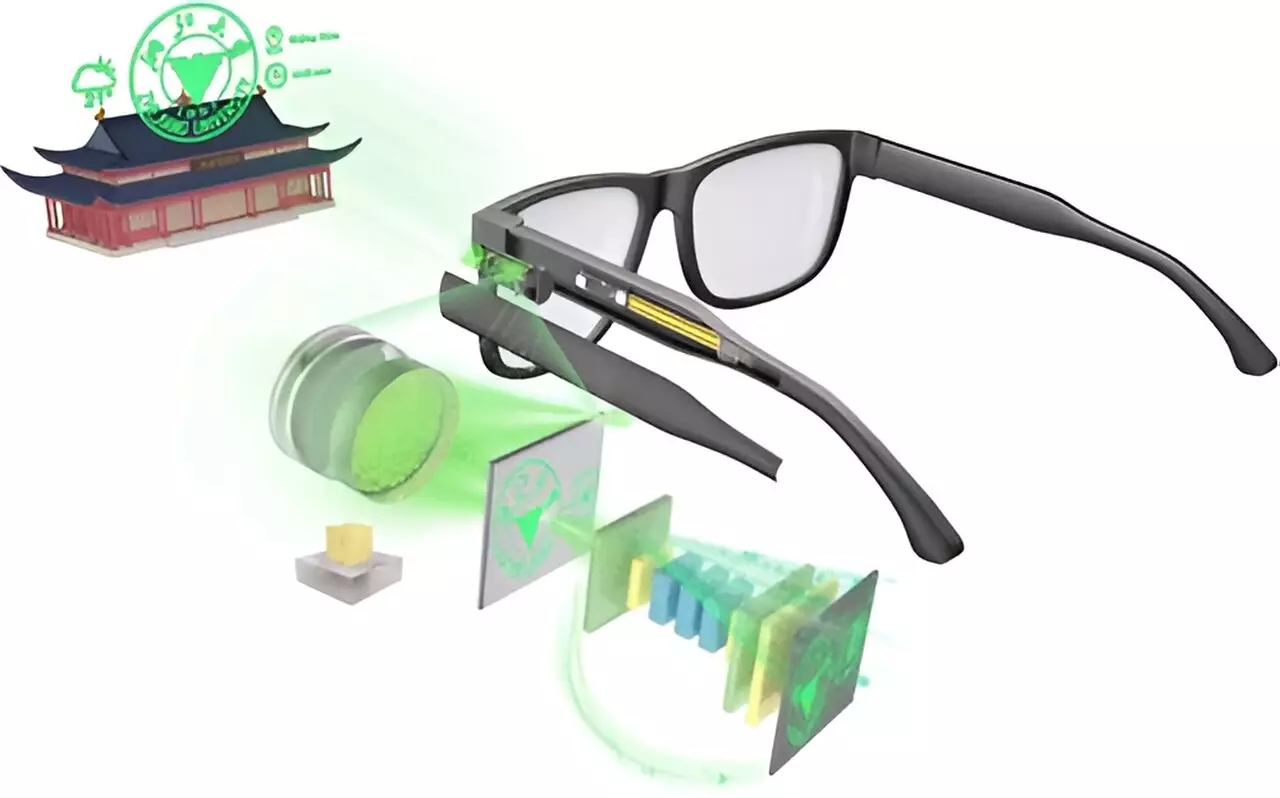Augmented reality (AR) has evolved rapidly, moving beyond its initial perceptions as merely a tool for entertainment and gaming. Today, its capability to blend digital elements with the physical world is being harnessed for more critical applications, including surgical procedures and autonomous driving. However, enhancing AR’s accessibility and ease of use remains a challenge, particularly when it comes to integrating high-resolution displays into everyday devices like eyeglasses. Researchers have recently made significant strides toward this goal by merging two advanced optical technologies to create a prototype AR display designed for personal eyewear.
The innovation emanates from the work of Youguang Ma and his team, who have crafted a compact AR display that combines a metasurface and a refractive lens with a microLED screen. Traditionally, AR systems often rely on cumbersome setups involving multiple lenses, which can compromise the image quality when reducing the overall size. However, through the use of an ultrathin silicon nitride metasurface, which is uniquely patterned for optimal light manipulation, the researchers have achieved a breakthrough in miniaturizing AR technology without sacrificing performance. This approach not only reduces weight but also improves the integration of these systems into eyeglasses, making them more viable for everyday use.
The engineering brilliance in this research lies not just in the compactness of the design but also in the image correction capabilities that have been introduced. By employing a sophisticated algorithm, the team was able to identify and correct discrepancies within the optical system before the light is projected, thereby refining the overall image quality. This proactive correction method ensures that the images displayed through the AR glasses boast less than 2% distortion even across a 30-degree field of view — a performance that rivals more complex four-lens systems currently available on the market.
The prototype has undergone rigorous testing, with one of the standout achievements being the reproduction of images, such as a red panda, which demonstrated remarkable similarities when compared to the original. Measuring at 74.3% structural similarity after corrections, this performance showcases the effectiveness of the applied enhancement techniques. Such results not only highlight the potential of this new AR technology but also underscore its capability to deliver high-quality visuals that can compete with existing commercial solutions.
Looking forward, the implications of this hybrid AR display technology could be immense. Not only does it provide a pathway to developing stylish and unobtrusive AR glasses that can transition from monochrome to full color, but it also paves the way for mainstream adoption of augmented reality in daily life. As research continues to refine these advancements, the potential for widespread integration of AR technology into various sectors becomes increasingly plausible, marking a significant leap toward the future of interactive digital experiences. With further exploration and enhancement, the vision of seamlessly blending digital overlays into our reality is inching closer to realization.


Leave a Reply